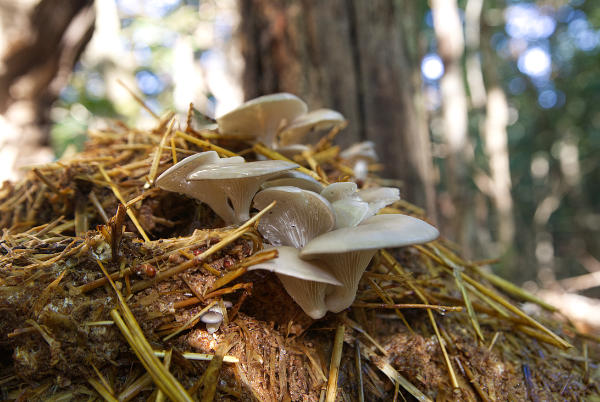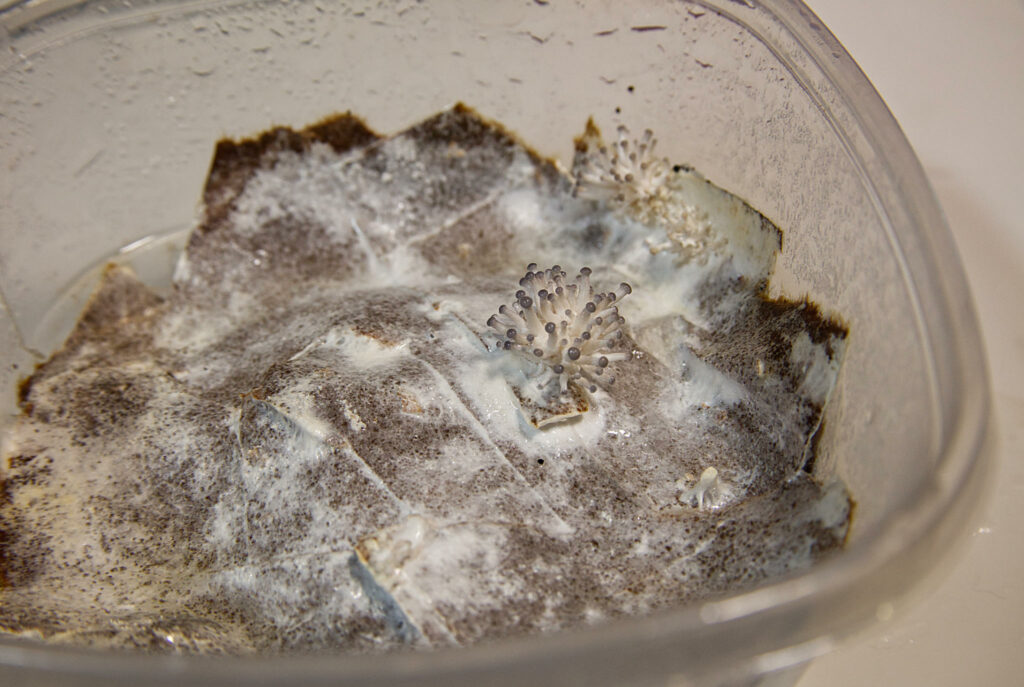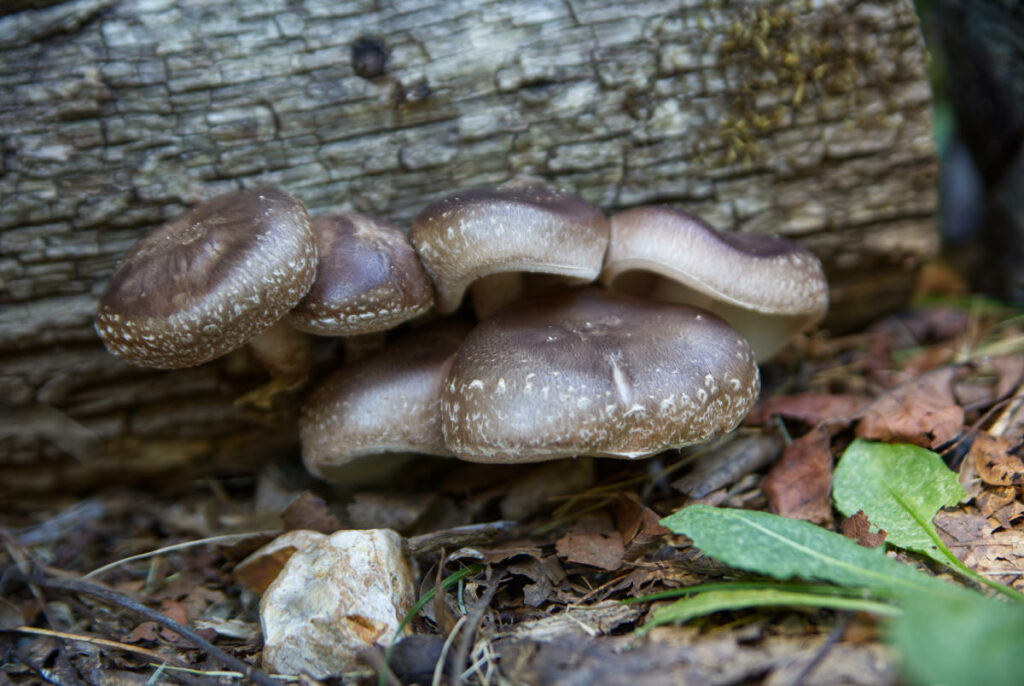
Are you tired of buying mushrooms from the grocery store that lack flavor and freshness? Why not grow your own? The secret to growing delicious, high-quality edible mushrooms lies in the substrate you use. In this article, we’ll explore the different types of mushroom substrates and how to use them to grow your own mushrooms at home. So, if you’re curious about how to grow your own supply of tasty mushrooms, keep reading to learn about mushroom substrates for edible mushrooms!
In this article, I want to cover mushroom substrates for you. You can think of mushroom substrates as comparable to the soil in raising a vegetable garden. You need the right soil and nutrients to grow a bountiful crop of vegetables. You need a substrate with the right nutrition and qualities for the type of edible mushrooms you are trying to grow.
If you have made it this far in our series you know about how we get to the point where we are ready to inoculate the substrate so we can fruit edible mushrooms. Be sure and start with our article entitled grow edible mushrooms at home for a basic knowledge of growing edible mushrooms at home. Check out the second article in the series for how to create and inoculate agar plates to grow mushroom mycelium. In the third article in the series, I show you how to inoculate grain spawn from the agar plates to expand the mycelium and get ready for the next step, which is inoculating a substrate to allow the mushroom mycelium to grow and then fruit.
But before we inoculate a substrate we first have to understand what a substrate is. That’s what we are going to cover in this article.
What Are Mushroom Substrates?
Mushroom substrates are materials that provide mushroom mycelium with all the nutrients they need to grow. If you have ever observed mushrooms closely in nature you will find that they grow in a variety of areas and on different types of materials. Some mushrooms, such as the common button mushrooms you buy in the grocery store, love to grow on manure. Other mushrooms, such as oyster and shiitake mushrooms, love to grow on wood and wood products. Each mushroom has a specific set of requirements for the preferred substrate for growing them. Let’s examine a few of the different substrates and the mushrooms that grow on them.
Mushroom Substrates for Specific Varieties
As stated above, different species of mushrooms have specific requirements for a growing medium or substrate.
Manure
Some varieties of mushrooms grow best on manure-based substrates. These include the common white button mushroom and “magic mushrooms”. Portabella mushrooms are also included here. Since they are just button mushrooms at a later stage of growth, they are not really a separate species of manure-loving mushrooms.
Wood
A short walk in the forest will reveal many species of mushrooms that grow from logs, stumps, and even living trees. Some of these mushroom varieties are edible, some are not. This is why it is important to be able to positively identify mushrooms before attempting to forage for edible mushrooms. Some of those can even cause serious illness or death.
But many edible mushrooms can be grown at home using wood chips, shavings, and even sawdust. They can even be grown on discarded wood products like cardboard and paper. I have even seen online where someone was growing edible mushrooms on old books. Yes, fungi are really that amazing and adaptable.
Straw
Straw is both a cheap and effective substrate for growing some species of mushrooms, such as oyster mushrooms. These mushrooms break down organic matter as part of their life cycle. Since straw contains substances such as lignin and cellulose that some mushrooms need, it can be a good substrate for growing mushrooms that decompose materials, such as oyster mushrooms. The straw is usually supplemented with other materials that provide extra nutrients, such as coffee grounds, to increase yields.
Coffee Grounds
Spent coffee grounds are an excellent substrate for some mushrooms, such as oyster mushrooms. Spent coffee grounds contain nutrition that the mushroom mycelium can break down and use. Another advantage of using spent coffee grounds is that the brewing process pasteurizes them, removing a step from processing the substrate. However, home users can have a hard time gathering enough coffee grounds while preventing mold and other contaminants from getting started. To prevent this you can store your grounds in the freezer as you collect them until you have enough to use. But this also means you will need to pasteurize them before you use them to prevent contamination.
Cardboard and Paper

Just like wood, processed wood products can be used to grow some types of edible mushrooms. Wood-loving mushrooms such as oyster mushrooms can be grown on cardboard or shredded paper. Shred the cardboard or paper and then soak them for about 12 hours in water. After soaking, heat the cardboard or paper to a slow boil and boil for 1-2 hours. This pasteurization step helps to prevent contamination and helps your mushroom mycelium get a head start colonizing the substrate.
In the photo above I am using pasteurized cardboard and coffee grounds in a small plastic food storage container to grow blue oyster mushrooms. This keeps the cost of mushroom substrates low because they are materials I already have at home.
Hardwood Pellets
Many types of heating stoves and cookers now can use hardwood pellets. These are both cheap and readily available for purchase. The great advantage of using hardwood pellets is that the manufacturing process has already pasteurized them, so you could just soak them in water until they break down, then use them right away. They are useful for growing most types of wood-loving mushrooms.
Sawdust
Hardwood sawdust is another material that might be readily available to you with a little bit of work. Many times sawmills will let you have the sawdust they produce for free, or at little cost to you. If you can’t source sawdust, simply use the hardwood pellets you can purchase at the store.
Coco Coir and Vermiculite
This type of substrate is a little more experimental, but it can be used to grow some types of mushrooms. Coco coir is the crushed shells of coconuts. Some wood-loving species of mushrooms can be grown on this by adding vermiculite to the mix.
Vermiculite is found in many brands of potting soil to promote moisture retention. It does the same for this mix. It helps to absorb moisture and then slowly release it. Since mushrooms need a moist environment and high humidity you can see how this helps to provide the right growth conditions for mushrooms.
Logs
Another way people can grow edible wood-loving mushrooms is on logs. Don’t use freshly cut trees, as they produce a natural substance to prevent most fungal growth. Let them sit for 2-3 weeks after cutting to allow these substances to dissipate before you try to inoculate them. The best logs are about 4 feet long and 8-24 inches in diameter.
Logs are usually inoculated by drilling holes around the log and driving in wooden dowels that have been inoculated with mycelium. Then the holes are covered with wax to prevent contamination. Be advised though that it can take up to 2 years for the logs to produce mushrooms. However, they can fruit in the spring and fall when conditions are right for 8-10 years. They need minimal care once established.

The shiitake mushrooms above were grown on an inoculated log. They started producing in the fall after 18 months.
Conclusion
As you can see there are many possibilities for substrates you can find readily and inexpensively to grow edible mushrooms at home. The best substrate to use will often be the one you can find easily close to your home. If you don’t live in a farming area it might be difficult to find wheat straw, but you may be able to easily find spent coffee grounds or hardwood stove pellets.
Experiment with different options as I have done, and find the one that works best for you. And be sure to check out our other articles, or check out our list of Youtube videos, for tips on other ways to live more naturally and make use of the bounty that mother nature has provided for us.
Be sure and check out all the informative articles on our Natural Living Blog.
FAQs:
Q: What is the best substrate for edible mushrooms?
A: The best substrate for edible mushrooms depends on the species of mushroom being grown. Common substrates include straw, sawdust, and various grains like rye or wheat.
Q: What substrate is used for mushroom fruiting?
A: The substrate used for mushroom fruiting depends on the type of mushroom being grown. Common fruiting substrates include sawdust, straw, compost, and various grains.
Q: How do you make a mushroom fruiting substrate?
A: The recipe for a mushroom fruiting substrate depends on the type of mushroom being grown. However, most substrates are made by mixing various organic materials like sawdust, straw, and grains with water, and sterilizing the mixture to eliminate any competing bacteria or fungi.
Q: What is the best grain substrate for mushrooms?
A: The best grain substrate for mushrooms depends on the species being grown. Popular grain substrates include rye, wheat, and millet.
Q: What is the best substrate for Psilocybe cubensis Monotub?
A: The best substrate for Psilocybe cubensis Monotub is a mixture of vermiculite, brown rice flour, and water. This substrate is known as “PF Tek” and is a popular method for growing psilocybin-containing mushrooms. Please be aware that growing Psilocybin containing (otherwise known as “Magic Mushrooms”) is illegal in the United States.
Q: Can you use coffee grounds as a substrate for mushrooms?
A: Yes, coffee grounds can be used as a substrate for growing mushrooms. They are rich in nutrients and can be mixed with other organic materials to create a substrate.
Q: Can you use rice as a mushroom substrate?
A: Yes, rice can be used as a substrate for growing mushrooms. Brown rice is a popular choice, as it contains more nutrients than white rice.
Q: What can I use for bulk substrate mushrooms?
A: Bulk substrates for mushrooms can include various organic materials, such as straw, sawdust, and different grains. Popular bulk substrates include a mix of straw and horse manure or a mixture of sawdust and wood chips.
Q: Is sawdust a good substrate for mushrooms?
A: Sawdust can be a good substrate for growing certain types of mushrooms, particularly those that are wood decomposers. However, sawdust can be difficult to work with and requires additional steps to prepare it for use as a substrate.